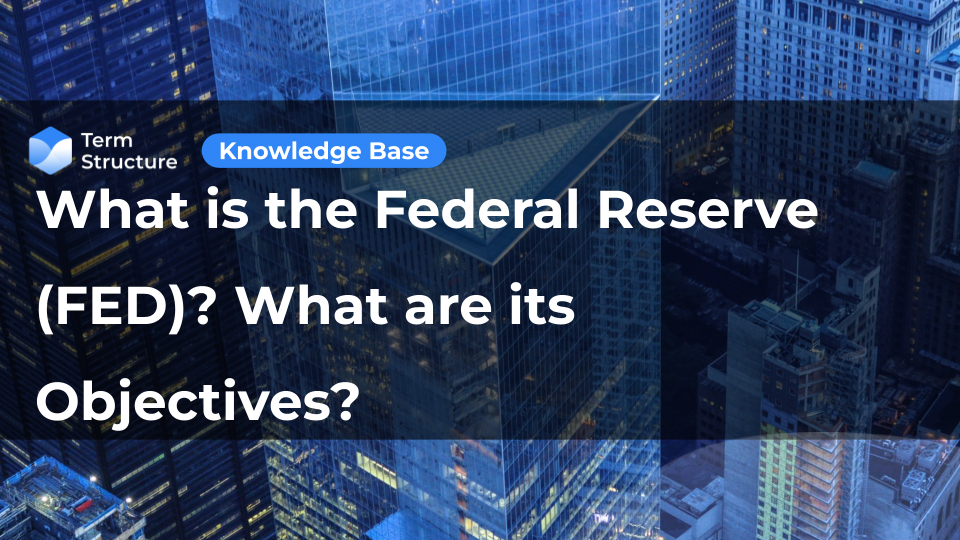What is the Federal Reserve (FED)? What are its Objectives?

The Federal Reserve, often referred to simply as "the Fed," is the central banking system of the United States. It was created by the Federal Reserve Act of 1913 and is composed of several key components.
The Structure of the Federal Reserve
- Board of Governors: The Federal Reserve Board of Governors is the main governing body of the Federal Reserve System. It consists of seven members appointed by the President of the United States and confirmed by the Senate. The Board sets monetary policy, supervises and regulates banks, and oversees the operation of the Federal Reserve Banks.
- Federal Reserve Banks: There are 12 regional Federal Reserve Banks located throughout the United States. These banks serve as the operating arms of the Federal Reserve System, conducting various functions such as clearing checks, distributing currency, and implementing monetary policy.
- Federal Open Market Committee (FOMC): The FOMC is the monetary policymaking body of the Federal Reserve System. It is composed of the seven members of the Board of Governors, the president of the Federal Reserve Bank of New York, and four of the remaining 11 regional Federal Reserve Bank presidents, who serve on a rotating basis. The FOMC meets regularly to set monetary policy, including decisions related to interest rates and the purchase or sale of government securities in the open market.
The Federal Reserve's Key Objectives
- Monetary Policy: The primary objective of the Federal Reserve is to promote maximum employment, stable prices, and moderate long-term interest rates. To achieve these goals, the Fed uses various monetary policy tools, such as adjusting the federal funds rate (the interest rate banks charge each other for overnight loans), conducting open market operations, and implementing quantitative easing measures.
- Financial Stability: The Federal Reserve is responsible for promoting the stability of the financial system and safeguarding the integrity of the banking system. It supervises and regulates banks and other financial institutions to ensure they operate safely and soundly, comply with applicable laws and regulations, and adequately manage risks.
- Payment Systems and Services: The Federal Reserve plays a critical role in providing payment and settlement services to banks and other financial institutions, as well as to the U.S. government. It operates the nation's payment systems, including the Fedwire Funds Service and the Automated Clearing House (ACH) network, which facilitate the transfer of funds between banks and the settlement of transactions.
The Federal Reserve's Monetary Policy Goals
- Maximum Employment: The Federal Reserve aims to promote maximum employment or achieve full employment in the economy. This means striving for an employment level where most people who are willing and able to work can find jobs. The Fed considers various indicators of labor market conditions, such as the unemployment rate, labor force participation rate, job openings, and wage growth when assessing progress toward this objective.
- Stable Prices: The Federal Reserve seeks to maintain price stability by keeping inflation low and stable over time. While some inflation is considered normal and even desirable for a growing economy, high or erratic inflation can erode purchasing power, disrupt economic decision-making, and lead to uncertainty. The Fed aims for an inflation rate of about 2%, using the Personal Consumption Expenditures (PCE) price index as its preferred measure of inflation.
- Moderate Long-Term Interest Rates: The Federal Reserve also aims to moderate long-term interest rates, which are important for supporting sustainable economic growth and financial stability. Interest rates influence borrowing and lending decisions by households, businesses, and governments and affect their spending, investment, and saving behaviors. The Fed uses monetary policy tools, such as adjusting the federal funds rate and conducting open market operations, to influence short-term interest rates, which in turn impact longer-term interest rates in the economy.
These three objectives are collectively known as the dual mandate because they reflect the Federal Reserve's dual responsibility to pursue both maximum employment and price stability. While the Fed focuses on achieving these objectives, it also takes into account other factors such as financial stability and economic growth when formulating monetary policy decisions.
Conclusion
To summarize, the Federal Reserve serves as the central bank of the United States, with responsibilities that encompass monetary policy, financial regulation and supervision, and the provision of payment services to support the smooth functioning of the economy.
